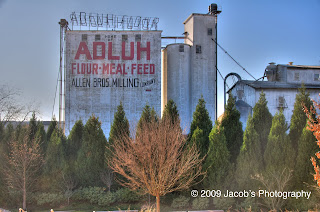
High Dynamic Range photography, herein referred to as HDR, is a set of techniques that allows a greater dynamic range of luminances between light and dark areas of a scene than normal digital imaging techniques. The intention of HDR is to accurately represent the wide range of intensity levels found in real scenes ranging from direct sunlight to shadows. Basically, HDR photography is a set of multiple images "layered" together using a computer program to show the full range of light and dark areas in the photo.
What you need to produce an HDRI or High Dynamic Range Image is a digital camera with AEB aka Auto Exposure Bracketing (on a Nikon it is referred to as just "Bracketing") or the ability to shoot RAW format and a RAW editor such as Aperture, Adobe® Photoshop, or RAWShooter. Also needed is an HDR Program such as Photomatix or Adobe® Bridge. The difference between the these two programs is the fact that Photomatix is a "stand alone" program specifically created for the purpose of creating HDR photographs. Adobe® Bridge, on the other hand, has many options. One of those options includes merging multiple images to create an HDR photograph in Adobe® Photoshop the image must then be shrunk from 32 bit to 8 bit for editing. None of the programs I have found have been exceptionally easy to use or very straight forward. However, if you are computer savvy or if you do not mind reading the "how to" that comes with the different programs it is not too awfully hard to figure out how to create beautiful HDR photographs.
Okay, here is the simplest explanation of how to create a HDRI. First, take one RAW picture or take, at least, three "bracketed" pictures (bracketing should be set up to be separated by at least one full stop). If you choose the one RAW image you will need to create two more versions of the picture using Aperture or Photoshop. One of the versions needs to be underexposed and one needs to be overexposed. If you choose to go the way of bracketing you will also need and overexposed, an underexposed, and a properly exposed photo. What is great about using the bracketed photos is the ability to load the bracketed images straight into the HDR creation software. Once the pictures have been loaded into the creation software, let the software render the image and you now have a beautiful HDR photograph.
For more information there are many websites that come up doing a Google search for HDR photography, but here is a link to a page with tons of great information and samples of beautiful HDR photographs www.vanilladays.com.
No comments:
Post a Comment